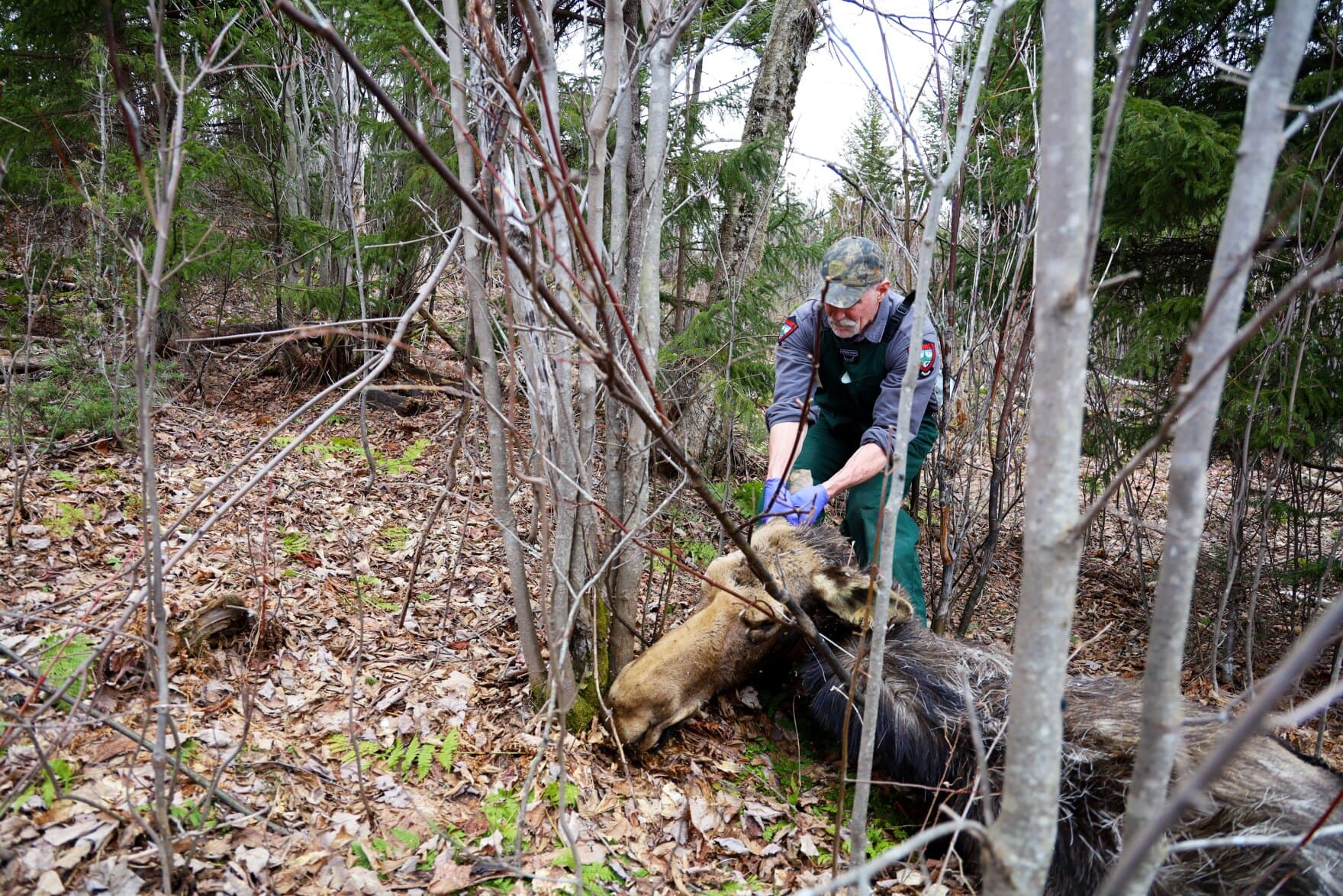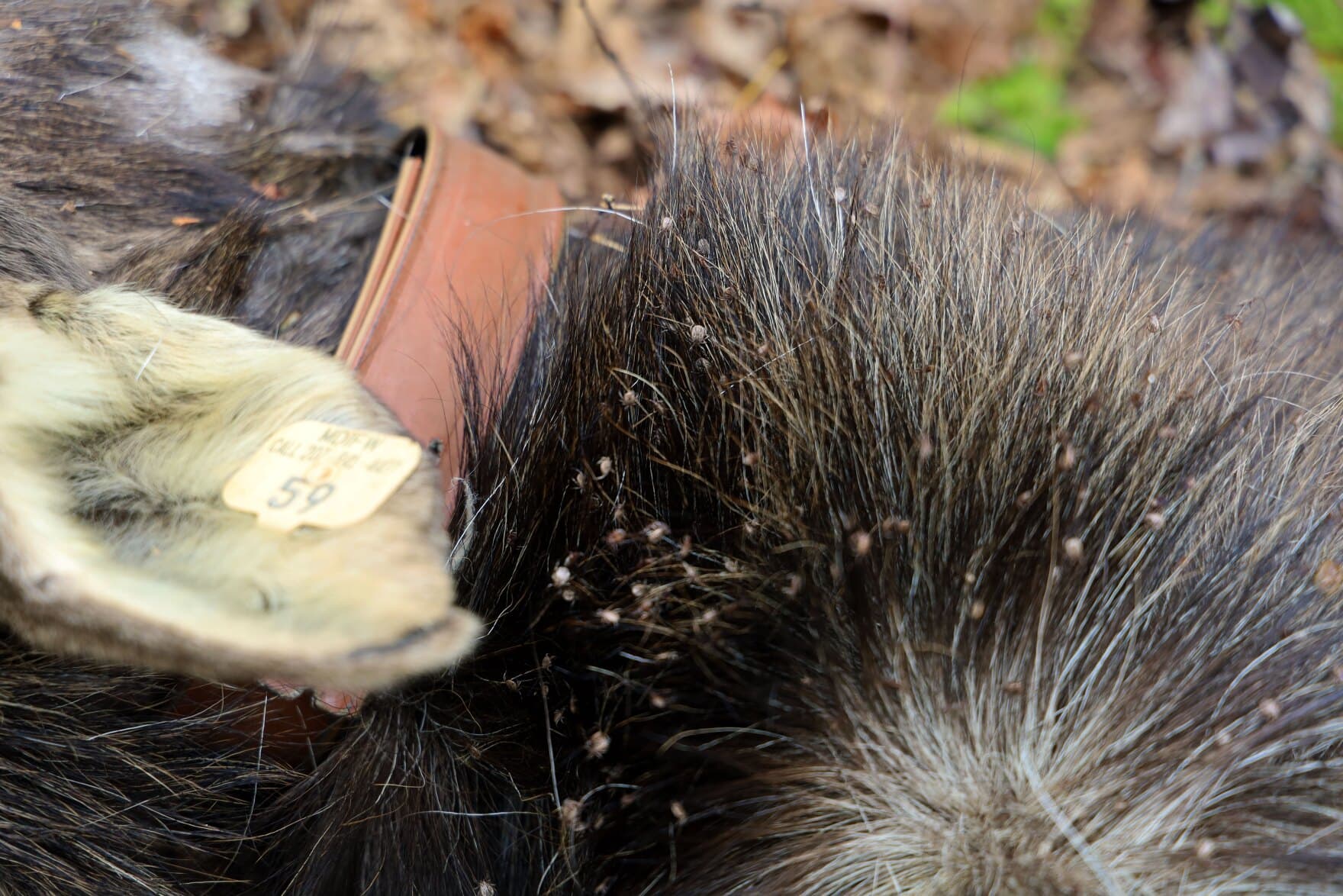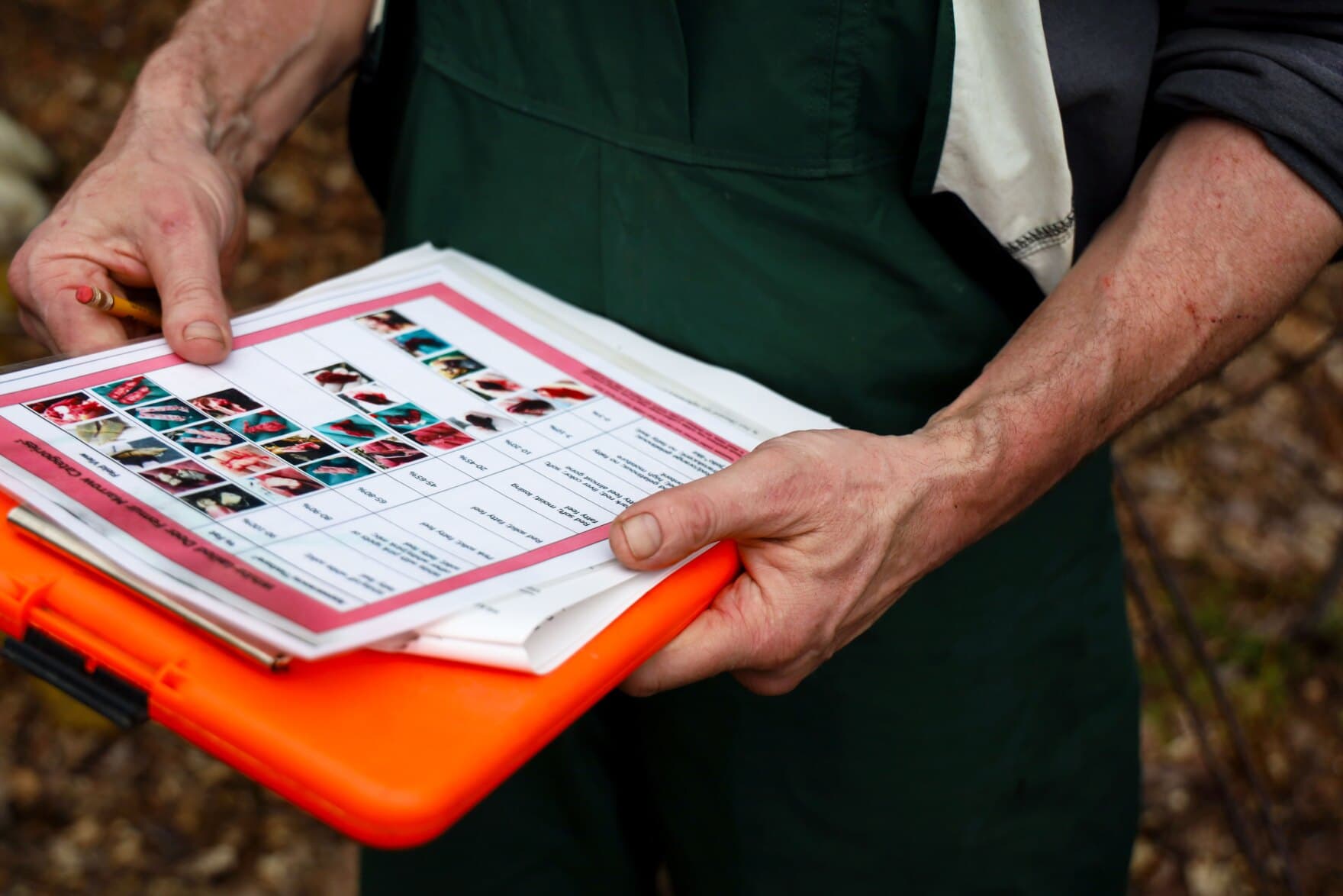Advertisement
Winter ticks wiped out nearly 90% of the moose calves scientists tracked in part of Maine last year

Maine is home to the largest moose population in the lower 48 states. But in one of the moosiest corners of the state, nearly 90% of the calves tracked by biologists last winter didn’t survive their first year.
And the culprit? A tiny critter that is thriving in parts of Maine as the climate warms.
“You look at one data sheet after another of what we found in the woods on these moose and it’s the same profile every time: it is winter tick,” said Lee Kantar, the lead moose biologist with the Maine Department of Inland Fisheries and Wildlife.
Winter ticks, which are sometimes called moose ticks, have been pestering Maine moose for about a century and likely longer. But their numbers have exploded in parts of Maine, New Hampshire, Minnesota and southern Canada. It’s not uncommon for biologists or hunters to find moose infested with 40,000, 75,000 or even 90,000 ticks. Some infested moose rub themselves virtually bald trying to scrape off the irritating ticks, creating the phenomenon known as “ghost moose.”
Many adult cows can survive such a massive tick load. Calves are another story, however.
Of the 70 moose calves that DIF&W collared in a remote wildlife management district spanning parts of Piscataquis and Somerset counties last winter, 60 of them had died by the beginning of May. That’s 86% — a record high mortality rate since DIF&W began the tracking survey.
“That’s how detrimental these ticks are,” Kantar said. “And it is pretty incredible.”
The surge has been apparently driven by a combination of a warming climate and — at least in parts of Maine and New Hampshire — moose populations that are so dense that it’s easy for larval ticks to find a host.
“Those populations up there are really high density,” said Alexej Siren, a postdoctoral researcher at the University of Vermont, said of the prime moose habitat that extends from northern New Hampshire across north-central Maine to parts of Piscataquis counties. “It’s on a very different scale than other areas of New England as far as other moose habitat that’s out there.”
Advertisement
Unlike deer and dog ticks, winter ticks literally hunt in packs. Larvae gather in interlocking clumps on vegetation, and when one tick snags a passing victim, hundreds or thousands tag along for the ride. A solid coating of snow or a sustained cold snap kill those larvae and stop the hunt, which scientists call “questing.” But snow has been arriving later in the fall across northern New England.
“The winters have shortened and the falls are longer, which means longer time for those ticks to quest and actively seek their host, which means (moose) have accumulated much more on them,” said Siren, who has worked closely with Kantar and his counterparts in New Hampshire.
“Core moose habitat in New Hampshire is the White Mountains and north, and winter ticks are still the largest factor influencing that population,” said Henry Jones, the lead moose biologist with New Hampshire’s Fish & Game Department. Areas of southern New Hampshire and Maine have fewer winter ticks because development limits moose populations. But in the vast commercial forests up north, massive clearcutting decades ago combined with regular harvesting since has created prime moose habitat.
While ticks won’t cause moose to disappear from the woods of Maine or New Hampshire — more frequent climate-related heat waves and habitat loss likely pose a bigger threat — Jones said climate change is giving the parasites a stronger toehold in some areas.
“So essentially you had this species, moose, that came in and found all of this food, no predator,” Jones said. “Their population exploded. Now it is coming back down. Winter ticks are acting as a predator in the system, and they are enhanced by the shifting climate, by the warming climate.”
Maine IF&W is also studying whether reducing adult moose densities in the same area where the calves were collared can improve the overall health of the population by lowering winter tick numbers. They are doing this by dividing the 2,000-square-mile wildlife management district that stretches from the Quebec border to Baxter State Park's western boundary. More hunting is allowed in one half, while it's status quo in the other.
The explosion in winter ticks is taking a toll on moose — and sometimes a fatal one.
And research suggests that winter ticks are also leading to fewer moose cows carrying pregnancies to full term in Maine and other parts of northern New England.

Such was the case in late-April when Kantar headed out of DIF&W’s Greenville office to investigate the death of a moose that has been on his agency’s radar screen for nearly a decade.
In the winter of 2014, biologists captured a young moose in the woods outside of Rockwood, fitted her with a radio collar and released her back into the wild. Moose Number 59 — as identified on her ear tag — roamed a patch of forest near Moosehead Lake for eight years until, in late-April, an antler hunter stumbled upon her fresh carcass and dialed the phone number on her tag.
Moments after bushwhacking to her final resting place near the border of Piscataquis and Somerset counties, Kantar starts reconstructing Moose 59's final chapter. He points to her bony hips, patches of missing hair — and a prime suspect in her death.
“There’s winter ticks all over her,” Kantar said. “So, you can see how big they are?”
The moose has been dead about four days, yet her carcass is literally crawling with big, brown ticks. Before collapsing, she might have been covered with 50,000 to 90,000 winter ticks. And scores of the parasites are still attached, grotesquely engorged to the size of large raisins.
Kantar and his team did field necropsies on most of the 60 calves that have died this past winter as part of a years-long research study in Wildlife Management District 4, which spans more than 2,000 square miles of remote, commercial forests north of the Golden Road. As a nearly 10-year-old cow, Moose 59 isn’t technically part of that current study. But she was in the first class of cows collared by DIF&W in 2014 and provided years of data before her radio collar eventually gave out.
So Kantar wanted to close the book on her — and to see whether she was carrying a calf at the time of her death.
She was, and Kantar gently removed the unborn calf from the cow’s carcass and laid it on the leaf litter. It was tiny — just 12 pounds and about two feet long. Kantar explained that mom was probably 2 to 3 weeks from birthing, so even if she had survived, the severely-malnourished calf wouldn’t have.
“So I don’t like to see this,” he said. “I’ll tell you that much.”
Field necropsies are laborious and messy when your subjects can measure eight feet from hooves to antler tips and weigh half a ton. So Kantar came armed with garden loppers, a hatchet and sharp knives. Inside this pregnant cow, he found bone marrow almost devoid of fat and internal organs that are a sickly white.

“She’s completely pale. This is, to me, when her organs are this coloration, that’s a sign of anemia, meaning she has been fed on by ticks,” Kantar said. “And she’s got so much blood loss that it’s showing up everywhere.”
Each adult female winter tick can remove one milliliter of blood from its host, which adds up to gallons of blood when you’re talking tens of thousands of ticks. Replacing that much blood may be impossible for some moose — particularly a pregnant cow — while subsisting on fat reserves and little else during winter. Making matters worse, Kantar discovered Moose 59’s lungs were riddled with two other types of parasites. He has little doubt about the cause of death.
“I wouldn’t be normally very quick to say that it is tick-induced. But between the tick and lung, it’s pretty bad,” Kantar said. “That’s pretty bad.”
His work complete, Kantar packed up his gear and leaves the moose — now collar-free and numberless for the first time in 8 years — to rest in the woods she once roamed.
This story is a production of New England News Collaborative. It was originally published by Maine Public.